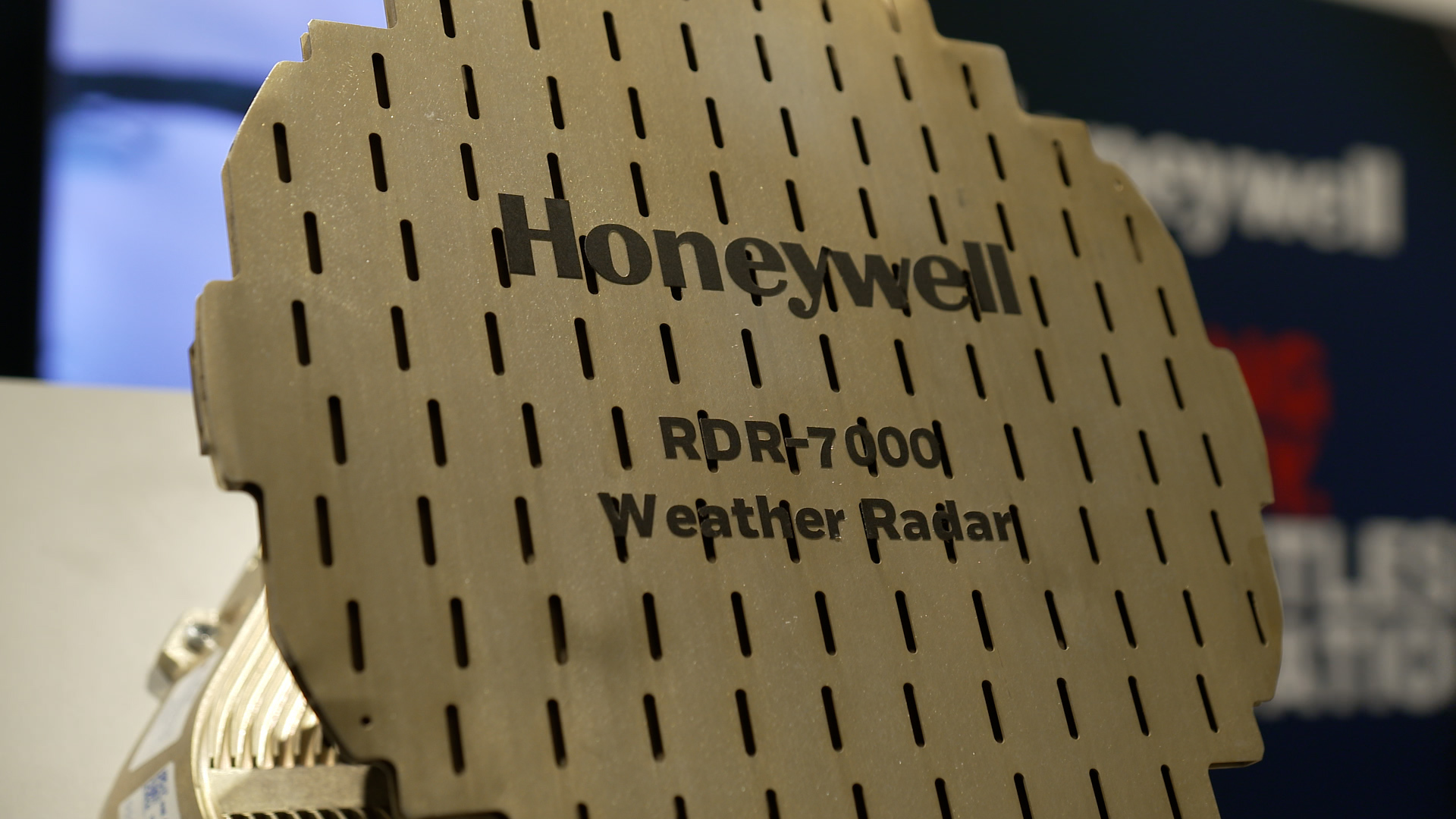
[RYAN ROBERTSON]
“ALL RIGHT, FOLKS, IT’S TIME ONCE AGAIN FOR OUR WEAPON OF THE WEEK. AND THIS WEEK, WE HAVE AN ENTRY THAT’S A LITTLE BIT DIFFERENT. WE’RE ACTUALLY TALKING ABOUT HONEYWELL’S RDR 7000 WEATHER RADAR. AND WITH ME TO KIND OF DISCUSS THIS, BREAK IT DOWN, EVERYTHING THAT IT MEANS IS ADAM GAVRICH. WITH HONEYWELL, ADAM, THANK YOU SO MUCH FOR JOINING US.”
[Adam Gavrich, Honeywell Senior Technical Sales Manager]
“Thank you, appreciate the opportunity.”
[RYAN ROBERTSON]
“SO RDR 7000 WEATHER RADAR, MAYBE THE MOST ADVANCED RADAR THAT YOU’VE EVER BEEN IN CONTACT WITH”
[Adam Gavrich, Honeywell Senior Technical Sales Manager]
AS FAR AS WEATHER INTERESTED CONCERN IS DEFINITELY BEST IN CLASS. So this radar is designed to be used on everything from helicopters to fixed-wing aircraft. And it’s really designed to detect significant weather so that crews can avoid it and keep their flight safe and efficient. What’s really unique about this radar is number one, its size. So we can do a host of very advanced functions as far as weather detection is concerned, and just using the single unit, so it’s very easy to install an aircraft. The other very special feature of this is that it’s continuously scanning. So traditional radars, you the crews have to manually control the radar tilt to get a good picture. This is continuously scanning the volume of sky in front of the aircraft. And then we have some very special algorithms that analyze that and intuitively display to the crew the most significant weather. So it’s going to reduce their workload in the cockpit again, let them focus more on flying the aircraft rather than trying to operate radar. When it comes to hazard features. It does some very unique things as well, we can predict lightning five to 10 minutes in advance using what we call a reflectivity analysis.”
[RYAN ROBERTSON]
“FIVE TO TEN MINUTES IN ADVANCE?”
[Adam Gavrich, Honeywell Senior Technical Sales Manager]
“Five to ten minutes in advance, and we actually will, on top of the radar returns put symbology showing where that late at night and where that lightning is predicted to be. So that the crews can avoid those areas, it’s very important for helicopters, especially to avoid the lightning. We can also detect hail and predict turbulence out to 60 nautical miles. So those are really the core radar features. From a weather perspective and the helicopter market. One very, very unique feature that no one else is really doing is we have a maritime surveillance function. So this radar in a certain mode can actually be used for search and rescue operations and oil and gas operations to pick up vessels and oil rigs on the ocean and display those on the returns as well. So, you know, in the military space, you know, our search and rescue type operations and operators, they find that very, very valuable, especially since again, it’s all it’s all right here in one radar.”
[RYAN ROBERTSON]
“BECAUSE OF ITS SIZE, ARE YOU ABLE TO POTENTIALLY PUT THIS ON, YOU KNOW, ATTRIBUTABLE AIRCRAFT OR LIKE SMALLER UAVS AT SOME POINT?”
[Adam Gavrich, Honeywell Senior Technical Sales Manager]
“Absolutely. Yeah, so the whole assembly weighs about 15 pounds. This is a 12 inch antenna. We offer bigger antennas, but they’re on certain class UAVs we can absolutely put this weather radar on and get that get that situational awareness for the for the operators.”
[RYAN ROBERTSON]
RIGHT. SOUNDS GOOD. ADAM, THANK YOU SO MUCH FOR JOINING US TODAY. AND THAT WILL DO IT FOR THIS EDITION OF WEAPON OF THE WEEK, AND THE REASON WHY WE DID THIS GUYS, IS BECAUSE THE WARFIGHTERS, THEY NEED TO BE SAFE OTHERWISE THEIR WEAPONS ARE GOING TO BE USELESS.







